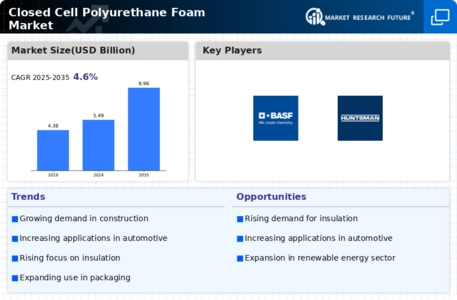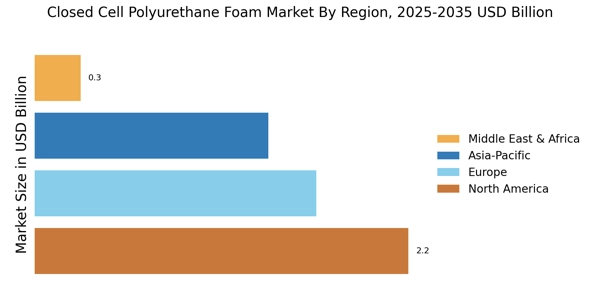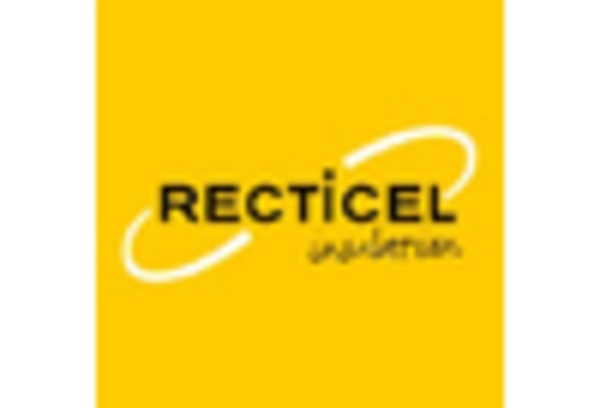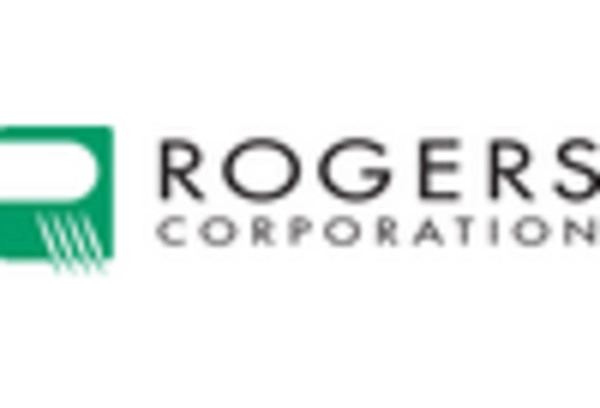Growth in Automotive Applications
The automotive industry is increasingly incorporating closed cell polyurethane foam due to its lightweight and energy-absorbing characteristics. This material is utilized in various applications, including interior components, sound insulation, and crash protection. The closed cell polyurethane foam market is expected to expand as manufacturers seek to enhance vehicle performance while adhering to stringent fuel efficiency regulations. With the automotive sector projected to grow at a compound annual growth rate of around 4% over the next few years, the demand for closed cell polyurethane foam is likely to rise correspondingly. Additionally, the shift towards electric vehicles, which require advanced materials for battery insulation and thermal management, further emphasizes the potential of closed cell polyurethane foam in this sector.
Expanding Applications in Packaging
The packaging industry is increasingly recognizing the advantages of closed cell polyurethane foam, particularly for protective packaging solutions. Its lightweight and shock-absorbing properties make it an ideal material for safeguarding fragile items during transportation. The closed cell polyurethane foam market is projected to see substantial growth as e-commerce continues to expand, necessitating effective packaging solutions. Market analysis suggests that the protective packaging segment is likely to grow at a rate of around 5% annually, with closed cell polyurethane foam playing a pivotal role in meeting the demands of this sector. As companies seek to enhance product safety and reduce damage during shipping, the adoption of closed cell polyurethane foam in packaging applications is expected to rise significantly.
Increased Focus on Energy Efficiency
There is a growing emphasis on energy efficiency across various industries, which significantly influences the closed cell polyurethane foam market. As organizations strive to reduce their carbon footprint and operational costs, the demand for effective insulation materials has surged. Closed cell polyurethane foam offers excellent thermal resistance, making it an ideal choice for applications in refrigeration, HVAC systems, and building insulation. Market data indicates that the energy efficiency sector is expected to grow by approximately 6% annually, with closed cell polyurethane foam playing a crucial role in achieving these targets. This trend is further supported by government incentives and regulations aimed at promoting energy-efficient technologies, thereby enhancing the market potential for closed cell polyurethane foam.
Rising Demand in Construction Sector
The construction sector is experiencing a notable surge in demand for closed cell polyurethane foam, primarily due to its superior insulation properties and moisture resistance. This material is increasingly utilized in residential and commercial buildings, contributing to energy efficiency and sustainability. The closed cell polyurethane foam market is projected to witness a growth rate of approximately 5% annually, driven by the need for high-performance insulation solutions. As energy costs continue to rise, builders and architects are opting for materials that enhance thermal performance, thereby increasing the adoption of closed cell polyurethane foam. Furthermore, regulatory frameworks promoting energy-efficient building practices are likely to bolster this trend, making closed cell polyurethane foam a preferred choice in modern construction projects.
Technological Innovations in Manufacturing
Technological advancements in the manufacturing processes of closed cell polyurethane foam are driving the market forward. Innovations such as improved formulation techniques and enhanced production methods are leading to higher quality products with better performance characteristics. The closed cell polyurethane foam market is benefiting from these advancements, as manufacturers can now produce foams that are lighter, more durable, and offer superior insulation properties. This evolution in technology is likely to attract new applications and expand the market reach. Furthermore, the integration of automation and smart manufacturing practices is expected to streamline production, reduce costs, and improve product consistency, thereby fostering growth in the closed cell polyurethane foam market.


















Leave a Comment